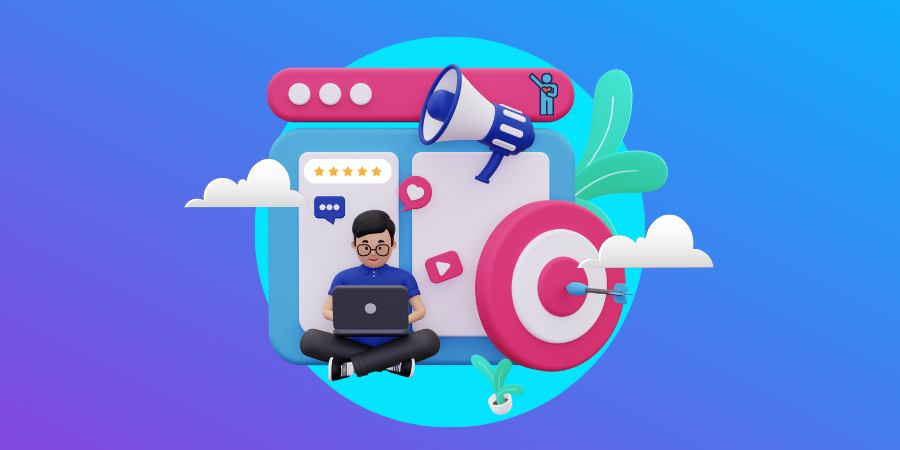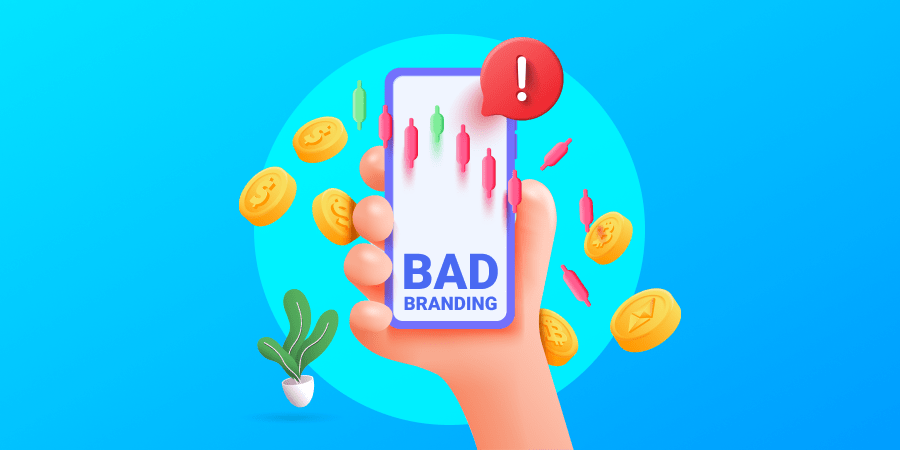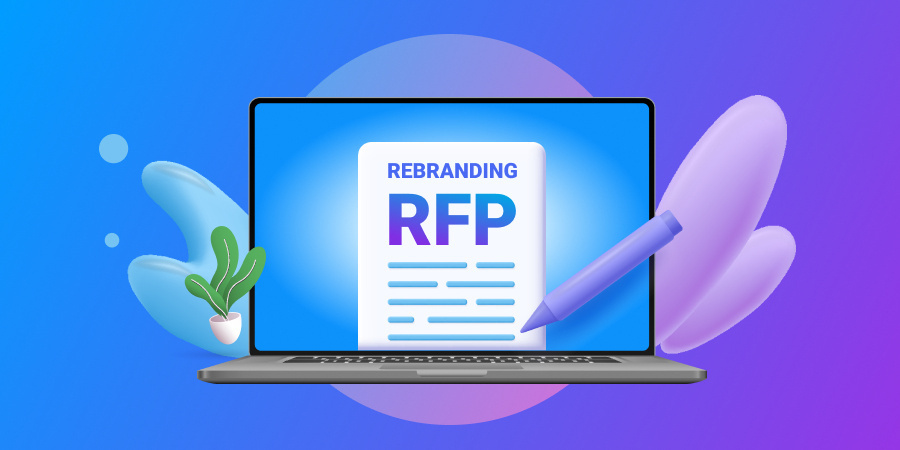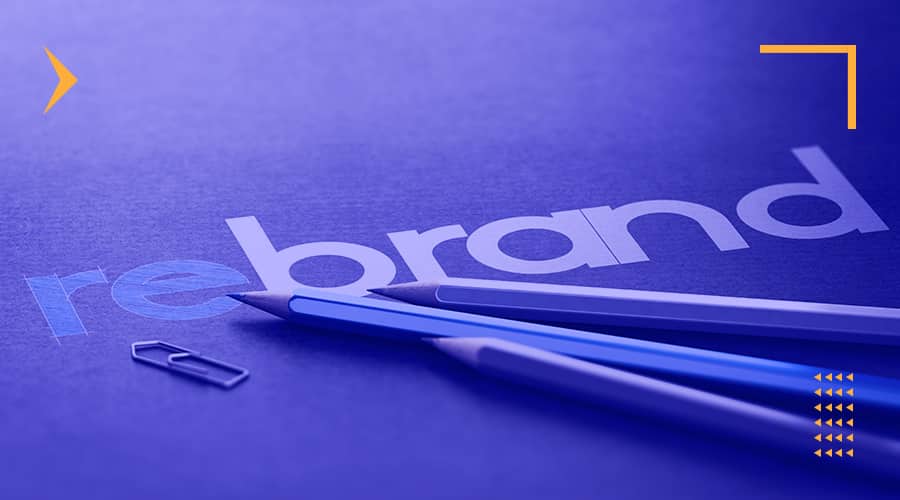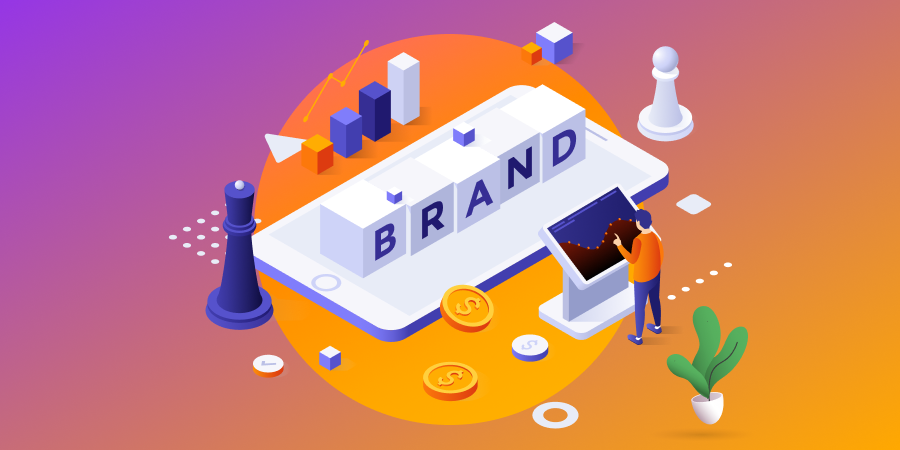While a loyal customer offers repeat purchases and more revenue, they offer something that’s arguably even greater: free advertising as a passionate ambassador for your brand.
Research shows that a whopping 75% of loyal customers will recommend a brand to friends and family members. The benefit of building trust that leads to loyalty is clear, but this begs the question: how do you do it?
We’ll share all you need to know about brand loyalty, including how to build loyalty in five steps and how our full-service branding agency can help.
Digital Silk grows brands online. Request A Quote
What Is Brand Loyalty?
Brand loyalty refers to the tendency of a consumer to purchase products or services from a particular brand repeatedly, because of the connection the consumer has with the brand.
There are many factors that play a role in brand loyalty, including customer experience, the consistency of the products or service, the benefits of the products or service, the brand’s values and more.
Brand loyalty is often confused with another common branding term, customer loyalty, but the two have several notable differences.
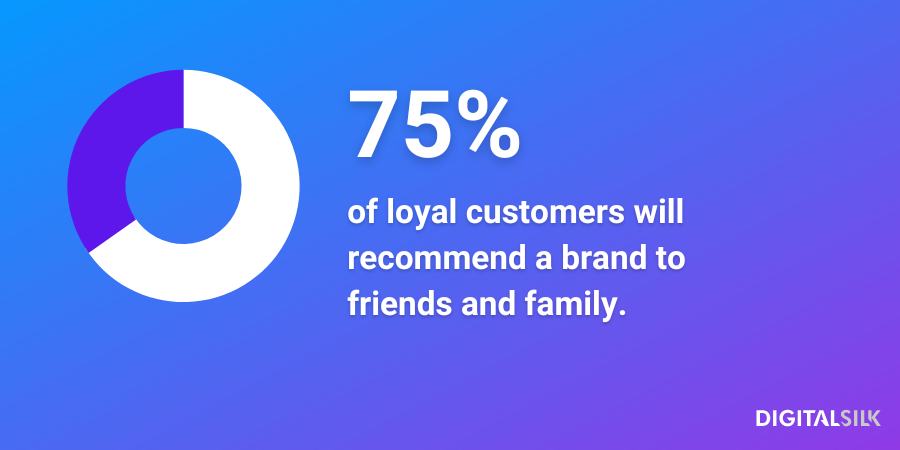
Brand Loyalty vs. Customer Loyalty
While brand loyalty is based on aspects like brand values and product quality, customer loyalty is based on factors like pricing, rewards programs and discounts.
The main difference is that brand loyalty is fueled by an emotional connection between the consumer and the brand.
Brand loyalty is fueled by trust due to factors like product quality, customer service or brand values that the consumer shares. Meanwhile, customer loyalty is driven by benefits and incentives, like low prices and loyalty programs.
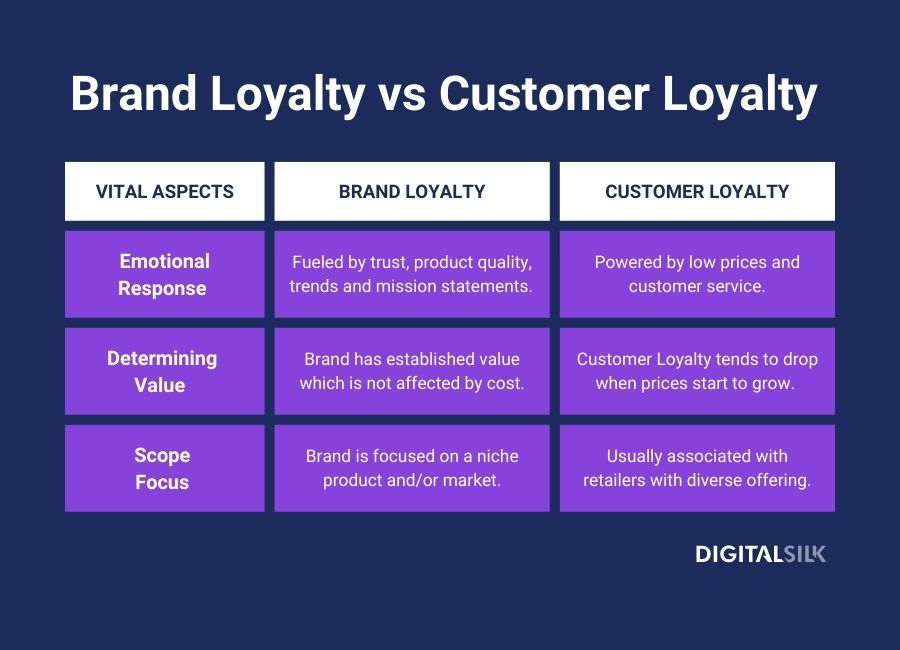
Why Brand Loyalty Matters
Just how important is establishing brand loyalty for a business success? Let’s look at some data.
- 52% of customers are willing to go out of their way to buy from the brands they are loyal to: Consumers tend to lean towards brand loyalty, giving you the immense potential to cultivate strong, lasting customer relationships and capitalize on the benefits of brand loyalty by creating an effective strategy.
- 74% of consumers feel loyal to a particular brand or company: Brand loyalty drives customer behavior and preference, leading to higher sales and increased market share.
- 77% of shoppers say they’ve maintained relationships with a specific brand for 10+ years: Brand loyalty can lead to long-term value and stability, which can help you build consistent revenue streams, a positive brand reputation and a loyal customer base.
- 58% of US consumers say that it would take more than one bad brand experience to lose their trust in a brand: Loyal customers are willing to forgive occasional missteps.
- Buyers who are emotionally connected to a brand have an astonishing 306% higher lifetime value compared to customers who are simply satisfied: This highlights the significant financial impact brand loyalty can have on your company’s overall success, as emotionally engaged customers make more frequent purchases and become brand advocates.
In summary, brand loyalty can have an important impact on revenue, visibility, stability and the overall success of your business.
Meet our experts! Schedule A Consulation
4 Levels Of Brand Loyalty
While representing one concept, brand loyalty can be viewed on four separate levels.
1. Cognitive Level
Brand loyalty at a cognitive level is when consumers are aware of a brand’s existence but do not have formed feelings or opinions about it.
This stage is the weakest form of loyalty, where customers can be primarily motivated by price and switch easily to a competitor if they have more affordable options.
In this stage: Identify your competitive advantage. Improve customer service, ask for feedback and implement changes or find new ways to emphasize your key selling points to customers.
2. Affective Level
At the affective level, customers are aware of a brand and can recognize it easily. They will also slightly prefer the brand over others, having most likely had a positive experience interacting with it.
In this stage: To attain effective loyalty, ensure your brand identity, positioning and services meet the expectations of your target audience by conducting thorough market research, developing a clear brand identity and continuously monitoring and analyzing customer feedback and market trends to adapt and improve your offerings accordingly.
3. Conative Level
At a conative level, customers are committed to buying from a particular company and have developed a desire to recommend the brand to others.
In this stage: Once you reach this phase, you’re able to shift your focus towards retaining loyalty by offering bespoke benefits such as loyalty programs, coupons, rewards, early access to new products, regular discounts and so on.
4. Action Level
The action level is the highest level of brand loyalty. At this stage, customers have developed a habit of buying from a particular brand, they identify with the brand or its values and they are likely to tell family and friends about their positive experience with the brand.
In this stage: To nurture and maintain this level of loyalty, continuously audit your branding and marketing strategies and adjust as needed to meet evolving customer expectations, stay competitive in the market, remain innovative and relevant and provide unique brand experiences.
How To Build Brand Loyalty In 5 Simple Steps
Building brand loyalty is like planting a tree – it takes time and effort before it takes root and grows strong, but once it flourishes it will provide benefits for years to come.
Here are the five steps for planting your seeds of brand loyalty and watching them grow into fruitful tree.
1. Know Your Audience
There are several ways to identify and get to know your target audience:
- Analyze your current customers (if any): Look at your existing customer base. What are their demographics, interests, pain points and behaviors? Create user personas for each target group and refer to these personas to tailor your branding, marketing and messaging.
- Conduct market research: Conduct surveys, interviews and focus groups to gather more detailed information on your target audience. Use tools such as SurveyMonkey or Think with Google for this process.
- Research your competition: Research the strategies your competition employs, from their branding and marketing efforts to their website and social media platforms. Use these insights to identify potential gaps in the market to capitalize on. Use online tools like Kompyte or G2Crowd to understand what your competition is doing on a deeper level.
- Utilize social media analytics: Social media platforms can provide insights into your audience’s demographics, interests and behaviors. Find out where your target audience spends time, what brands they engage with and how they interact online. Tools such as SproutSocial or Izea can help you understand how your audience behaves on social platforms.
- Monitor website analytics: Use tools like Google Analytics to analyze your website traffic and collect data on your target audience, including where your traffic is coming from, what pages they’re most interested in and how long they’re spending on your website.
Knowing your audience inside and out will help you tailor your offering, messaging, voice and overall brand experience to meet their specific needs and expectations.
2. Connect With Your Audience
Once you know who your audience is, it’s time to start building meaningful relationships with them. For lasting brand loyalty, your customers need to feel like they are valued and not just perceived as profit potential.
To establish a trusting relationship with your audience and encourage them to put your brand on their loyalty map:
- Design a brand identity that resonates with your audience’s values and interests.
- Engage and connect with your audience on the platforms and channels where they spend the most time.
- Use storytelling to bond with your audience on an emotional level. By crafting compelling narratives that resonate with your audience’s values, emotions and aspirations, you can create a deep bond and foster a sense of shared experiences to build more trustworthy relationships with your customers.
- Offer personalized experiences, such as customized products or targeted marketing messages.
- Collaborate with influencers that your audience follows and trusts.
- Consistently deliver high-quality products or services.
3. Drive Customer Satisfaction Through Quality Customer Service
Quality customer service creates a positive relationship between your customers and your brand. It makes your customers feel valued, heard and understood, which leads to higher levels of trust, increased brand reputation and customer retention.
To ensure a high level of customer service:
- Connect with your audience through their preferred platforms and channels: Create a presence on channels where they are most active, including social media, live chat, chatbots and more.
- Offer actionable solutions: Be proactive in finding solutions to your customers’ problems. Offer personalized recommendations based on customer preferences, address potential issues before they arise, surprise customers with gifts or rewards or offer exclusive access to special events or promotions.
- Follow up: After resolving a customer’s issue, follow up with them by expressing gratitude and seeking their feedback for improvement. Go that extra mile to show your customers you value their trust.
4. Reward Loyalty
Seven out of 10 Americans consider loyalty programs as a leading factor in securing their loyalty toward their favorite brands
Having made the initial steps to brand loyalty, you need to nurture your customer relationship and show them you appreciate their devotion to your business.
To reward loyalty, implement:
- Loyalty programs: Reward your customers for their repeated purchases by offering discounts, exclusive access to events or promotions, birthday rewards and so on.
- Personalized experiences: Create personalized experiences for your loyal customers, such as early access to new products, customized products or personalized campaigns.
- Social media shout-outs: Give your loyal customers a shout-out on social media or other marketing channels to show your appreciation.
- Surprise freebies: Surprise your loyal customers with unexpected gifts or rewards.
5. Create & Implement A Social Responsibility Plan
Social responsibility represents the idea that businesses have an obligation to act in ways that benefit society, beyond just making a profit.
Buyers are becoming increasingly conscious of the impact that their purchases have on the world and the environment around them.
In fact, 77% of consumers feel motivated to purchase from brands committed to making the world a better place.
As a business owner, there are several ways you can be socially responsible, including:
- Implementing eco-friendly practices, such as reducing waste and energy consumption or using renewable resources
- Ensuring fair wages, safe working conditions and establishing non-discriminatory policies for all of your employees
- Supporting local communities through charitable donations, volunteering and so on
- Getting involved in resolving social justice issues by sponsoring events or promoting awareness through your social media platforms
By incorporating social responsibility into your business practices, you can not only make a positive impact on society but also build trust and loyalty by aligning your goals with your customers’ values and beliefs.
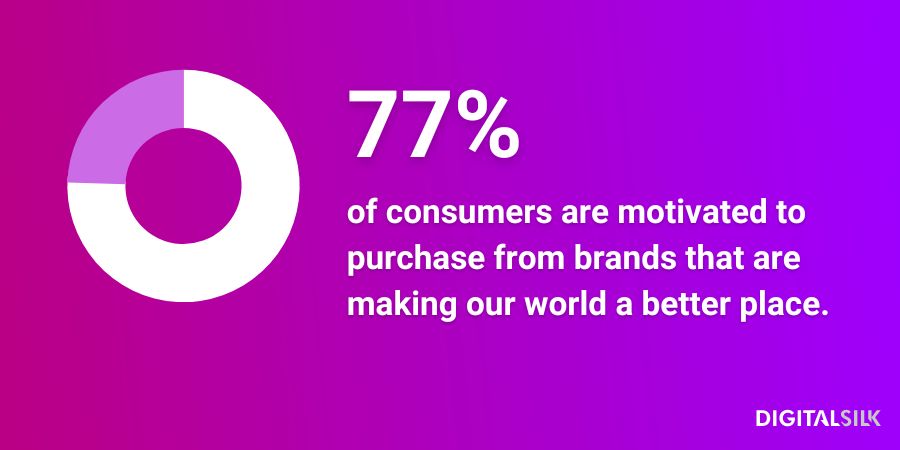
3 Inspirational Brand Loyalty Examples
You’re likely familiar with the global following that renowned tech brand Apple has garnered, often seen in practice when they release a new iPhone model. Loyal customers stand in line for hours (and often overnight!) to be one of the first to get their hands on the new tech.
This is not a coincidence; it is a result of carefully planned strategies and decisions made at the highest level.
Let’s see what lies behind the success of Apple and other renowned companies and why people are so loyal to these brands.
1. Apple
Online comparison website Comparably gives Apple an extremely high Net Promoter Score (NPS) of 52. This metric relates to how likely a consumer is to recommend a brand to others
This backs the scenes we see of customers snaking along street corners as they await the newest Apple product.
But what are the reasons behind Apple’s brand loyalty?
Product Quality
The sensation of holding an Apple product is pleasantly tactile. Its smooth curves and clean lines are instantly recognizable and distinctive.
Their products are designed with great attention to detail that appeals to a broad range of users, from those who need basic calling and browsing functions to creative influencers and designers.
Powerful Marketing Machinery
Apple understands the importance of connecting with their customers on a personal level by focusing on what they value most. They recognize that it’s not about the technical specifications, but rather the experience that matters most.
What sets Apple apart is their meticulous attention to detail in marketing. Their messaging is simple, yet relatable, and resonates with their audience, generating buzz and word-of-mouth.
The Allure Of Exclusivity
Apple is renowned for keeping their upcoming releases shrouded in secrecy, adding to the feeling of excitement and anticipation surrounding their products.
Buying the latest iPhone on the launch day is always followed by thousands of new phone selfies and unwrapping videos from Apple’s loyal customers.
2. Nike
With an NPS of 50, Nike is ranked #7 in Comparably’s list of global best brands. So, how do they achieve this?
Strong Brand Identity
Nike has built a powerful brand image over time with its iconic “swoosh” logo and widely known tagline “Just Do It“.
Nike’s brand image and mission have stayed consistent throughout the years, which is one of the reasons why this sports brand remains instantly recognizable.
Storytelling
Nike is a master when it comes to storytelling with an in-depth understanding of the emotional role in building brand loyalty.
Their brand communication strategy involves messages like “Yesterday you said tomorrow. Just do it.” and “It’s only crazy until you do it.” Nike offers motivation and encouragement; propelling customers to leave their comfort zone and take action.
In 2021, Nike even won an Emmy reward for their “You Can’t Stop Us” commercial, which clearly demonstrates just how passionate they are about their storytelling.
Social Media Marketing
Nike has 290 million followers on Instagram alone. They manage to stay relevant at all times and here is how:
- They use all kinds of content to engage their audience, including videos, graphics and stories.
- They engage with their followers by encouraging them to share their stories and experiences with a brand.
- They follow the latest trends in sustainability and eco-friendliness.
- They enlist some of the best athletes in the world as brand ambassadors.
3. Coca-Cola
With an NPS score of 39, Comparably deems Coca-Cola’s brand loyalty base as strong but less so than our previous two examples.
Still, you’ve probably caught yourself craving a cold glass of Coca-Cola on a hot summer’s day. What is it that makes this brand recognizable around the world?
Consistency
Coca-Cola has been consistent in its brand image and messaging for over a century. The iconic Coca-Cola logo design became ingrained in people’s minds, which has helped them create a sense of trust and familiarity with their consumers.
Messaging
Since its foundation, Coca-Cola has spread messages of love, happiness, positive experiences and family times.
Some of their messages over the years include:
- 1979: “Have a coke and smile”
- 2001: “Life tastes good”
- 2009: “Open happiness”
- 2016: “Taste the feeling”
Marketing
Coca-Cola invests heavily in marketing and advertising to maintain its brand visibility and appeal to different audiences. We grow accustomed to their New Year and Christmas commercials that spread holiday joy all over the world.
Build Brand Loyalty With Digital Silk
As a leading creative web design agency, our team at Digital Silk is comprised of top brand designers and strategists with extensive experience working with brands of all sizes and across industries.
We conduct thorough research into your industry, competitors and target audience to create a custom brand strategy that aligns with your goals, whether you’re starting a new business, rebranding or entering a new market.
Our branding deliverables include:
- Custom logo design
- Brand book
- Style guide
- Brand strategy
In addition to helping you build brand loyalty through a comprehensive strategy, we also provide services for web design and development, marketing, copywriting, consulting and more as a full-service agency, placing all of your digital needs under one roof.
We offer custom quotes for every project and approach every partnership with complete transparency while offering expert guidance and recommendations every step of the way.
Tell us about your branding project. Request a proposal.
"*" indicates required fields


